The Disgusting Food Museum in Malmö is for those who want to shudder and think "I'm so glad I'm not invited to grilled guinea pig in South America tonight". But it's also for those who want to reflect on their own eating habits... Perhaps in Sweden we eat things that are perceived as "disgusting" by others?
Table of contents
Disgusting Food Museum
The Disgusting Food Museum started as a temporary exhibition in 2018, and has been a permanent museum since 2019. Today, the museum showcases 80 of the world's most disgusting dishes.
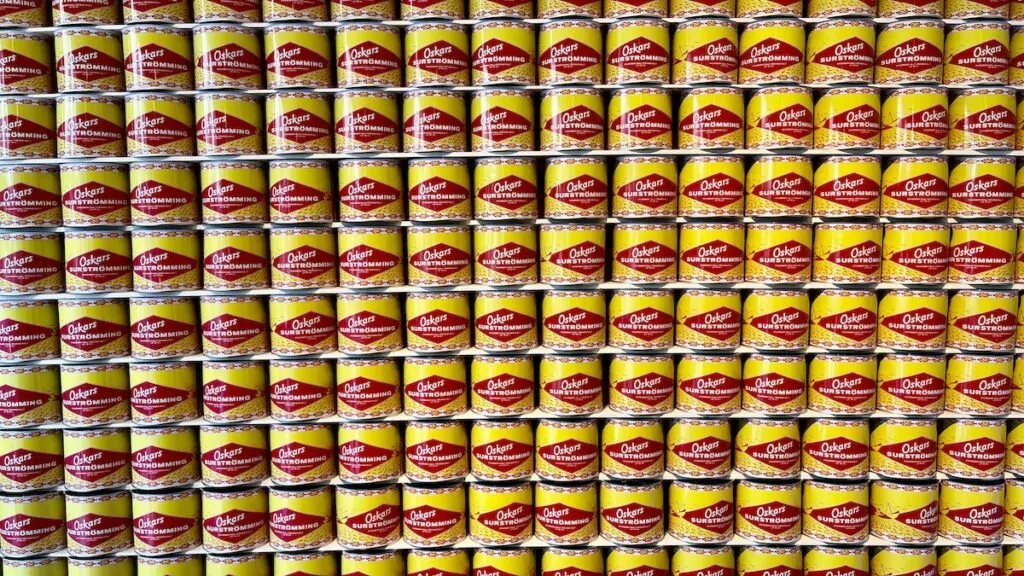
The Disgusting Food Museum is located at Södra Förstadsgatan 2 in the centre of Malmö.
Visiting the Disgusting Food Museum
When you enter the Disgusting Food Museum and pay your ticket, you are given a vomit bag "just in case". The guy at the counter points to a board on the wall and says that it says when someone last vomited. Two days ago.
We bring the vomit bag and think "this is going to be disgusting". Then it becomes interesting rather than disgusting. But on the other hand, we mostly choose not to sniff the smelling cans and we never go to the tasting counter. About had we done so, the vomit bag might have come in handy ...
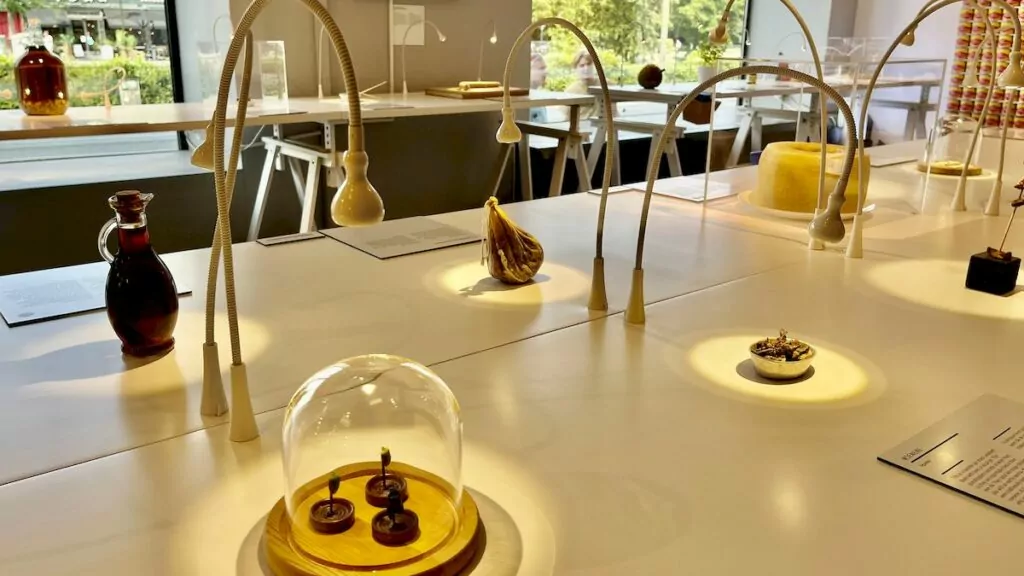
What is "disgusting"?
What exactly is "disgusting"? This is a question that immediately comes to mind, and the museum has also pondered this question. What we find disgusting is partly subjective, but also cultural - and perhaps partly universal. According to an information board at the museum, there are seven categories of disgust:
- Food which is rotten, contaminated or mouldy ...
- Disease/contamination
- scum and what comes out of this ...
- Mutilation/malformation
- Behaving like an animal
- Sexual behaviour which is considered wrong
- Moral offences
We follow the arrows on the floor and come to one dish after another. What is disgusting? A Peruvian drink made from mixed frog? Scottish haggis made from lamb heart, liver, kidney and lungs? Or perhaps garlic-fried tarantula spiders, which became common in Cambodia during the violent rule of the Khmer Rouge, when there wasn't much choice in what to eat?
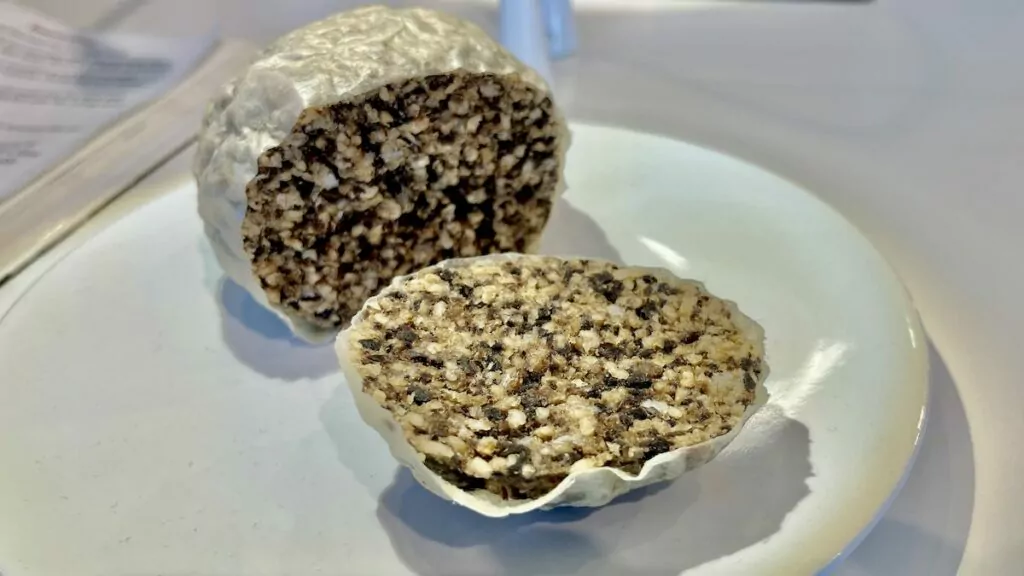
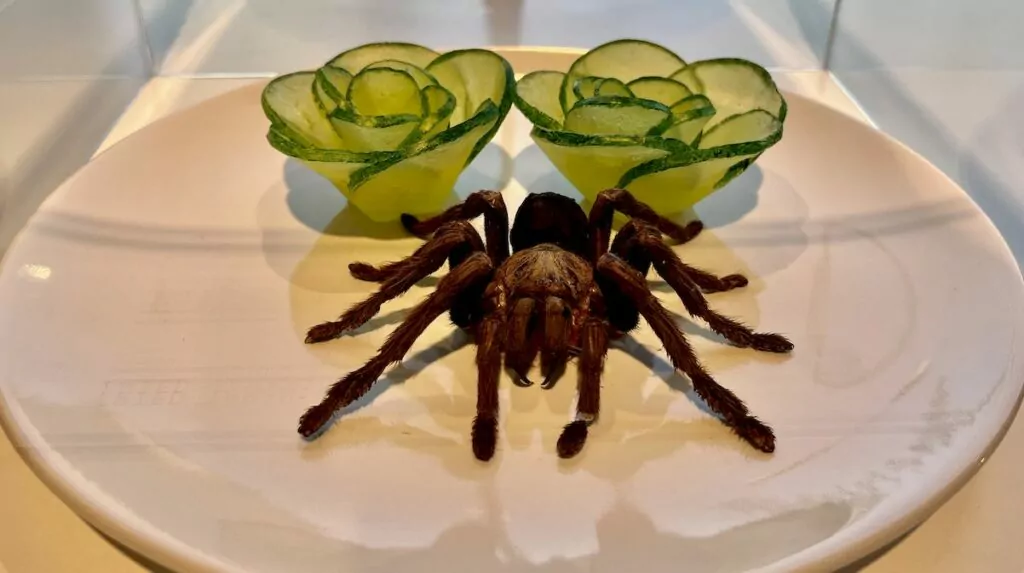
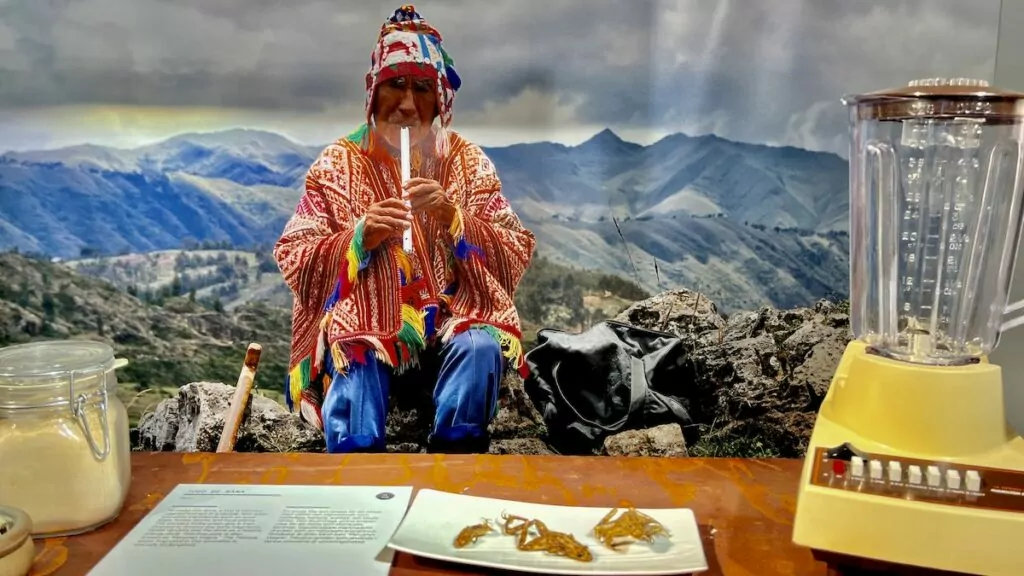
Disgusting food - around the world at the Disgusting Food Museum
Guinea pigs are eaten in Peru and the museum tells us that during the annual Cuy festival in Cusco they are dressed up in fashionable clothes - and grilled. The combination seems a bit strange to us, but maybe not to them. We come back to something we've discussed before. That we prefer not to have a name for the animal we eat. In other words, we don't want to have a relationship with it ...
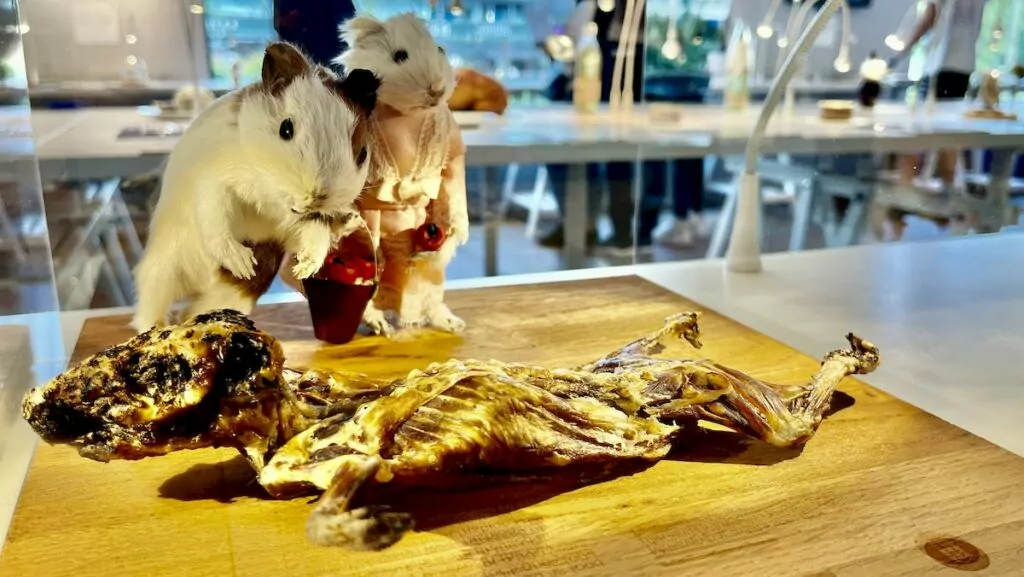
When we look at the Japanese blowfish 'fugu', it's a different kind of disgusting. The problem here is that the fish carries a poison 1200 times deadlier than cyanide, and if cooked incorrectly, a single specimen can kill 30 people. The chefs must have three years of training to serve the dish. I'm sure they're great ... but we prefer cod or salmon, so to speak. Just in case.
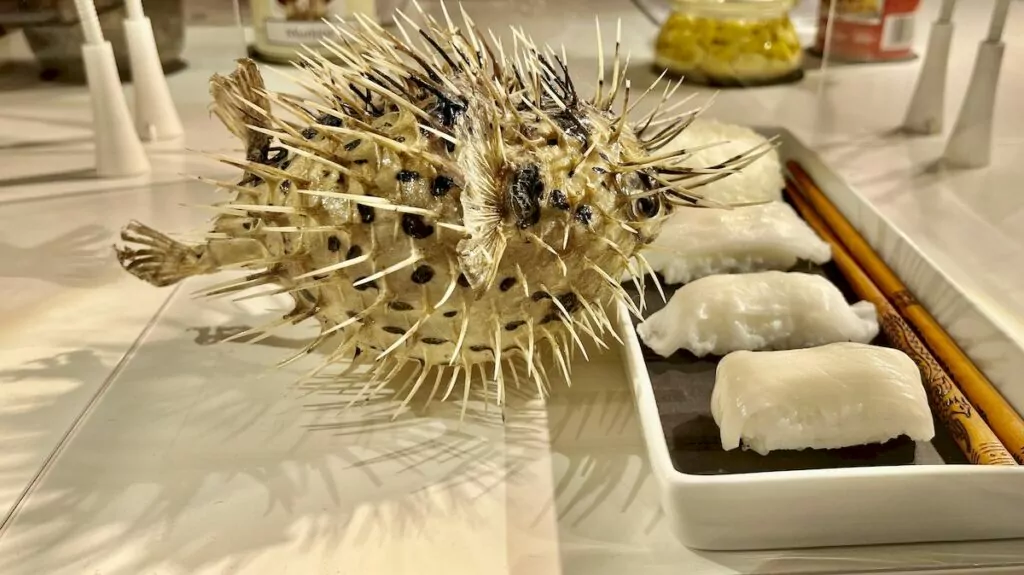
I (Helena), having lived in Iceland, also enjoy seeing some Icelandic "favourites" (well), such as hákarl, or fermented shark. Read more about Icelandic specialities in this article.
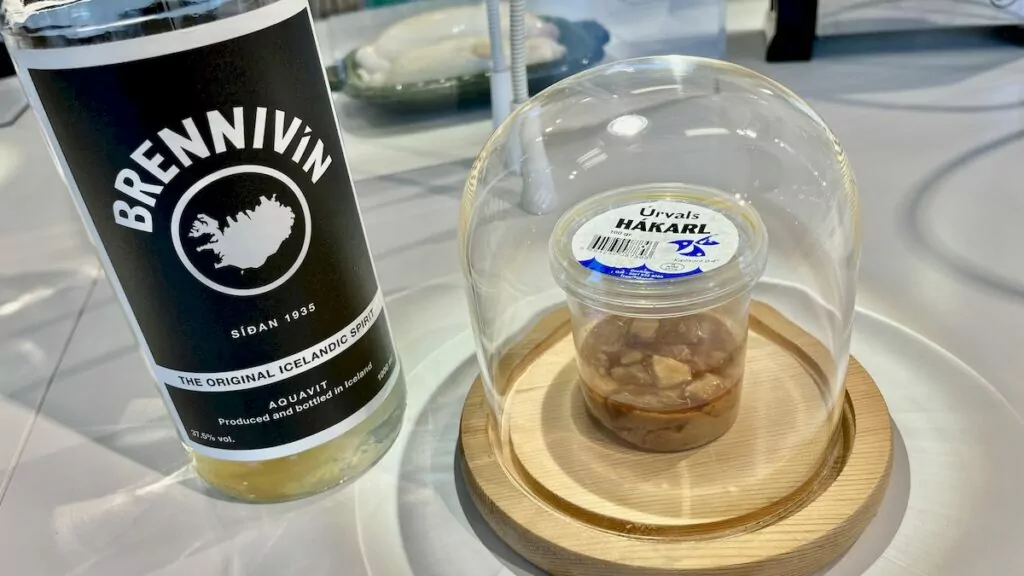
The museum showcases dishes that have long historical traditions, but also more recent dishes that can be considered disgusting because of the ingredients companies use. There are also a number of horrific stories of food scandals, where companies have chosen to hide the fact that their products are actually dangerous to eat for financial reasons. In some cases, this has led to people getting sick or dying. Definitely disgusting from a moral point of view!
The iconic American canned ham 'SPAM' is not dangerous to eat, but you have to put up with it smelling like dog food. It apparently has the advantage of keeping almost "forever" without refrigeration and is supposed to taste better than it smells. Interestingly, we learn that it is this ham that, through a Monthy Python sketch, led us to use the word "spam" for unsolicited e-mail.
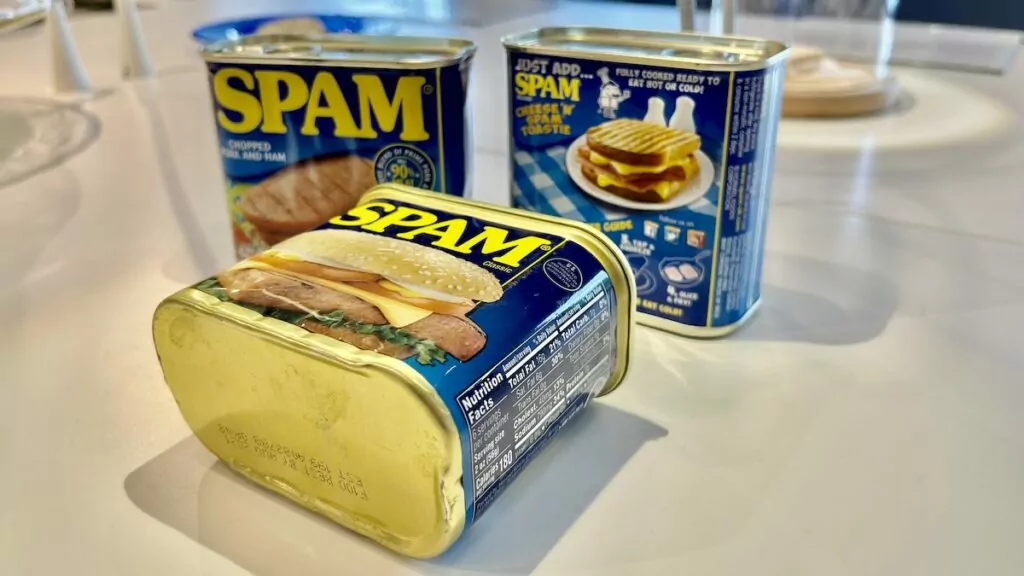
What do we ourselves eat that is disgusting?
What is interesting to reflect on, of course, is that it is not only others who eat "disgusting" food. What we eat in our culture can also be perceived as disgusting by others - and maybe sometimes even by ourselves if we think about it.
Sweets, made from gelatine, is a favourite Saturday treat for many. But did you know that gelatine is made by boiling the leftovers from animal slaughter? Now at least we'll be less hungry ...
salted liquorice is also popular in the Nordic region, although people in other parts of the world may find the flavour strange, or even 'painful'. And it's a bit odd to flavour candy with ammonium chloride, a chemical otherwise used to clean metals.
LobsterWell, at least it's a delicacy, right? In the 17th century, these nasty animals were only used as fish bait and as food for poor people, slaves and prisoners. In Massachusetts, out of consideration for the prisoners, it was even forbidden to serve this seafood as dinner more than twice a week in prisons. It can be seen that our idea of what is disgusting, or exclusive, changes over time.
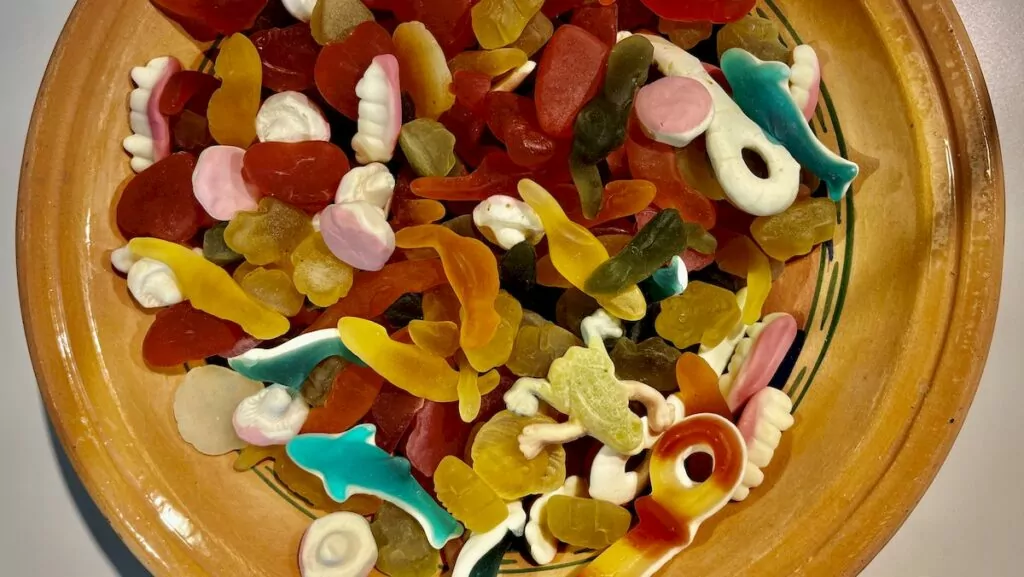
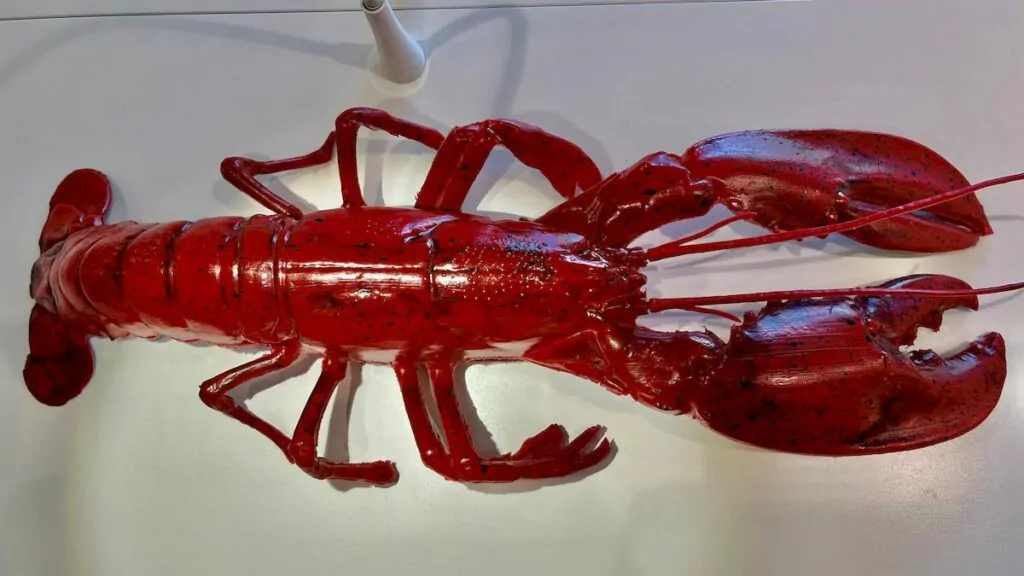
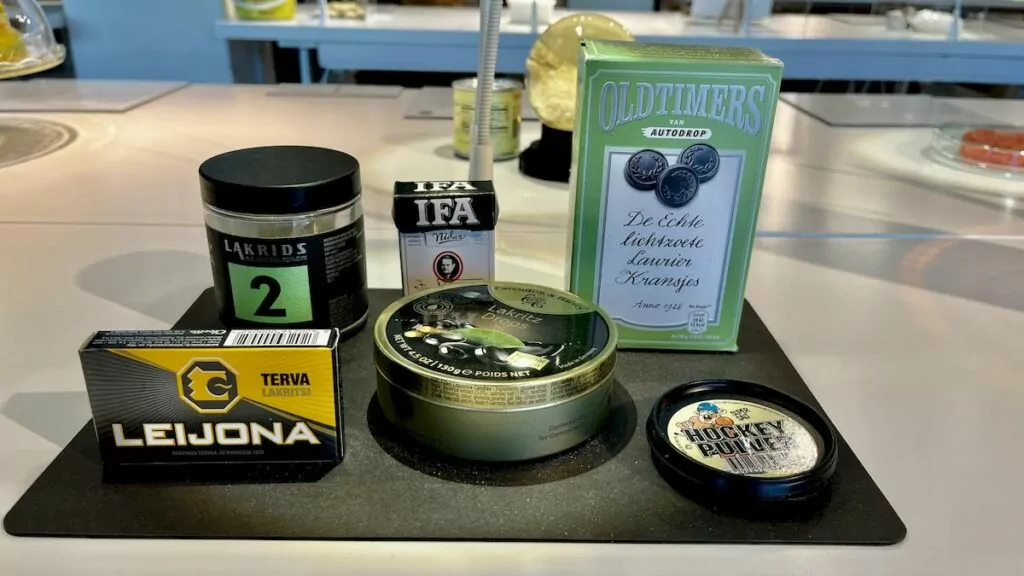
Flavour also varies from person to person, and the herb coriander is an excellent example of this. It is said that you either love or hate the flavour. Around 10 per cent of people think the herb tastes like soap, which is said to have a genetic explanation, as a specific gene increases sensitivity to the 'soap smell'.
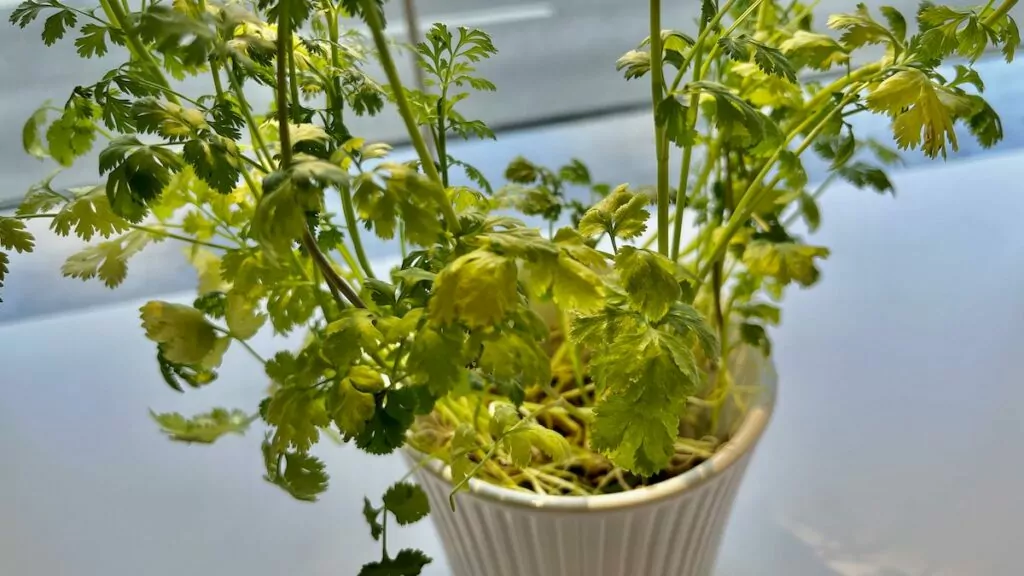
Smell, taste ... or go out in the fresh air
If you're not content to just look and read, you can also unscrew the lids of various jars to experience the 'smell'. Do you want to taste too? Then you can go to the counter where the staff offer a variety of flavours, ranging from exotic "delicacies" to traditional Swedish Kalles caviar.
If you don't feel a strong urge to try it, then just walk out and enjoy the fresh air in Malmö.
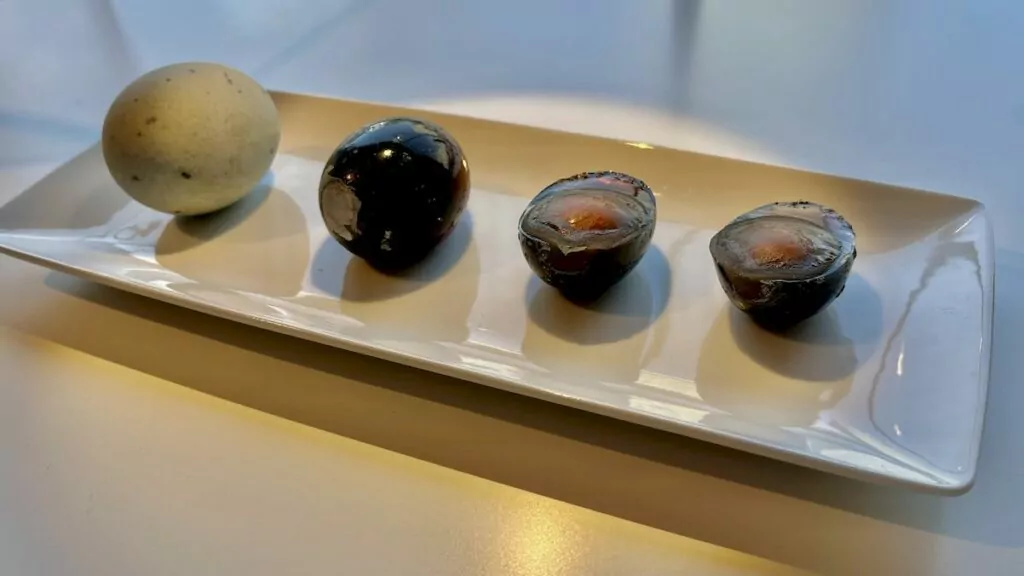
More to see and do in the neighbourhood
Malmö is a cosy and friendly city, where you can experience beautiful beaches, check out street art or visit Malmöhus Castle. If you want to go on excursions outside Malmö, we can recommend Jakriborg, the Dalby Söderskog National Park and Lund with the fine open-air museum Kulturen.

Have you visited the Disgusting Food Museum in Malmö? Would you dare to smell and taste?
Facts about the Disgusting Food Museum
- Address: Södra Förstadsgatan 2, Malmö
- County: Skåne County
- Landscape: Skåne
- Read more: You can find more information at the museum's website.
Services and practical information
- Opening hours: The museum is usually open Wednesday-Sunday 11-17. During the high season, opening hours may be extended to all days (see the museum's website for current information). The museum is always closed on Midsummer's Eve, 23-25 December and 31 December.
- Prices: Adults pay 195 SEK/person. Seniors and students pay 160 SEK/person. Children 6-15 years pay 65 SEK/person and children 0-5 years have free entry (2022).
- Guided tours: It is possible to book a 1.5 hour "VIP tour" with one of the museum's founders, for groups of at least 4 people.
- Shop: There is a small shop in the museum, including T-shirts and specialised products (sweets, sauces, etc.).


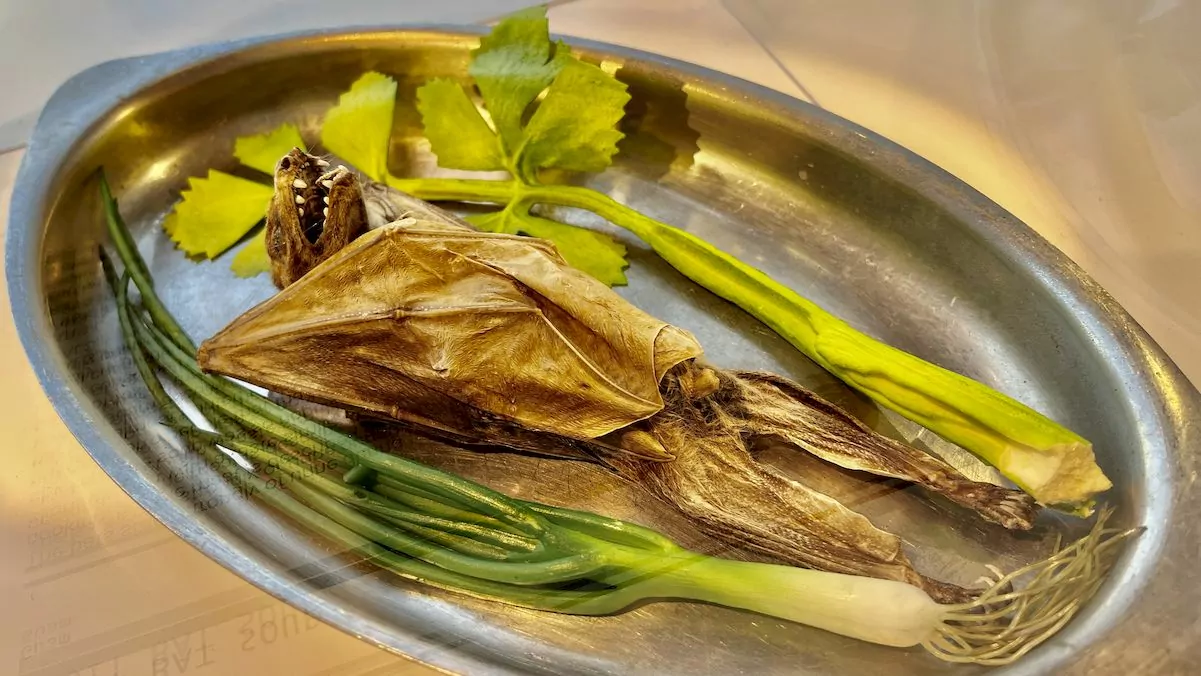










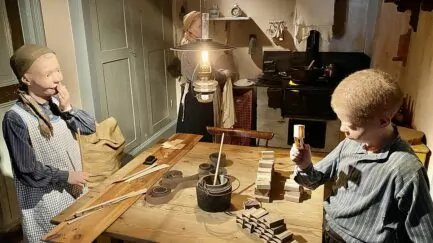




BP says:
I just love that museum! What is disgusting? Yesterday I wrote a post about dog ice cream that I bought for myself. Most of my readers thought it was disgusting. Sour herring is the same as fermented herring, so I can probably handle fermented shark without the slightest problem.
My limit is probably insects and tarantulas;-)
28 July 2022 - 19:46
Helena says:
Dog ice cream, haha. Yes, it sounds a little disgusting 😉 But on the other hand, it's just a preconceived opinion, because I have no idea ... I also like to avoid insects and tarantulas, but maybe if they are well-fried and you can't really see what it is .... 😉
29 July 2022 - 9:02
bmlarstravellingblog says:
What is disgusting? A good question with different answers depending on who you ask. I've eaten guinea pigs with Indians in Ecuador, no way to turn them down. Then we ate grilled, with teeth, in a market. It tastes really good! Then I have difficulty with food like surströmming so for me it is really disgusting food. Anyway, an interesting museum we never heard of!
28 July 2022 - 21:54
Helena says:
Interesting that you ate guinea pig! I can imagine that it tastes just fine. It's mostly about habit and tradition, what you think feels "normal". Recognise the fact that it is not the time to say no ... Sometimes you just have to try, even if you are not so hungry! 😉 The museum was interesting!
29 July 2022 - 9:04
Maria/emjis.se says:
No place for me!!! But very interesting! Surströmming I understand is included... crayfish I have heard is considered strange abroad.
The strangest thing I've eaten is a classic French dish: snails and sprouts. Snails were vomitous! Chewy lump! Ugh.
Frog legs worked better because it tasted like chicken but had a hard time seeing them.
Other things I can think of that belong on the list are liver, cod roe, black pudding...
And speaking of jelly beans, citric acid and aspartame should be banned in food!
29 July 2022 - 13:22
Maria/emjis.se says:
Of course it should say frog legs and not sprouts....
29 July 2022 - 13:23
Helena says:
Haha, I knew it! Sprouts are not that disgusting 😉.
01 August 2022 - 11:06
Helena says:
Haha, we liked the place! Interesting about cultures around the world! (But we skipped the tasting ;)) Snails I also had a hard time with. I have tried frog in China and agree with you, it was perfectly ok. Black pudding I think is ok (though I never buy it), but I really understand if it can be perceived as "disgusting" ... 😉 .
01 August 2022 - 11:05